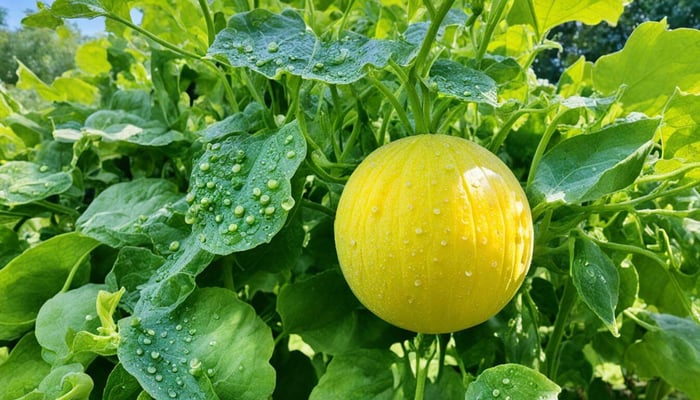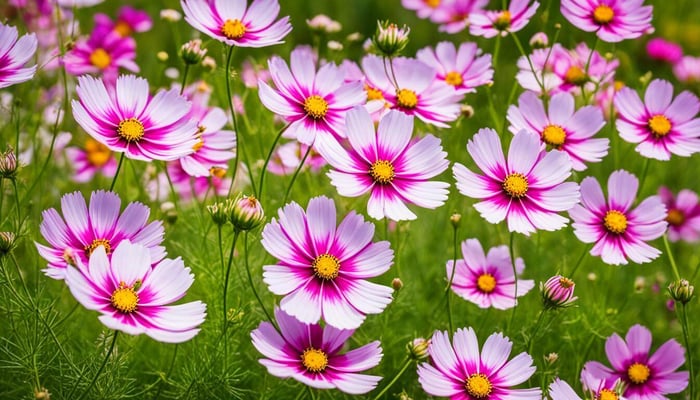When it comes to growing pepper plants, one question that often arises is, do pepper plants need support or not? Should we stake our pepper plants for better growth? Or can they thrive on their own? The answer might not be as straightforward as you think.
Gardeners have different opinions on this matter, with some swearing the benefits of providing support while others argue that pepper plants can stand tall without assistance. So, what's the truth? Let's dive into the fascinating world of pepper plant growth and determine if support is necessary.
Key Takeaways:
- There is some debate among gardeners about whether pepper plants need support
- Understanding the growth habits and structure of pepper plants is crucial in determining if support is necessary
- Factors such as overall stability, fruit load, and environmental conditions can influence the need for support
- Signs that your pepper plants may require support include bending stems, heavy fruit load, and wilting
- Providing support to pepper plants can prevent breakage, improve airflow, and increase fruit production
Understanding Pepper Plant Growth
Before determining whether pepper plants need support, it's important to understand their growth habits and structure. Proper knowledge of pepper plant growth can help you make informed decisions and provide the necessary care for these plants. Let's delve into the natural growth patterns of pepper plants and how they develop.
Pepper Seed Assortment | 8 Variety Pack
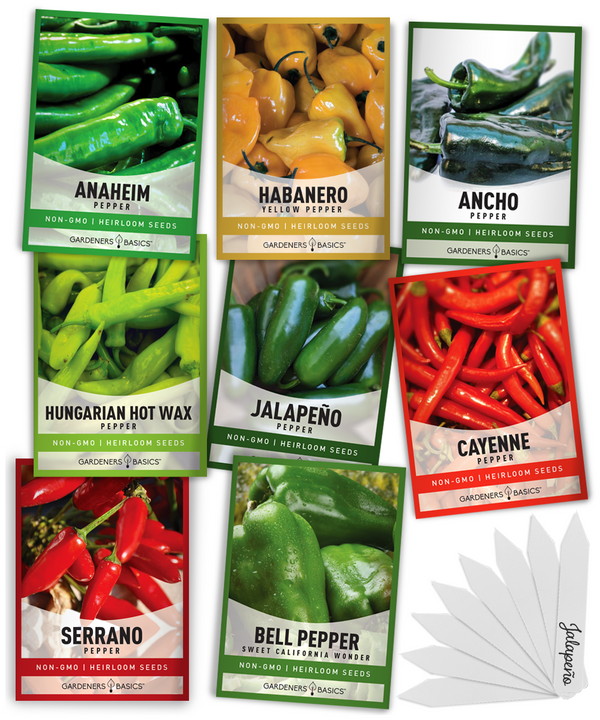
$15.95
8 Pepper Seeds Variety Pack – Heirloom, Non-GMO, Open-Pollinated, Non-Hybrid Seeds Elevate your garden with our 8 Pepper Seeds Variety Pack! This premium selection includes a mix of heirloom, open-pollinated, non-hybrid, non-GMO pepper seeds, perfect for beginner and experienced gardeners.… read more
Pepper Plant Life Cycle
Pepper plants go through several stages in their life cycle, from seed germination to fruit development. Understanding these stages can give you valuable insights into their growth requirements. Here are the key phases of a pepper plant's life cycle:
- Germination: Pepper plants start their journey as seeds, which require warmth, moisture, and proper soil conditions to sprout. Soil temperature around 75-85°F (24-29°C) is ideal for seed germination.
- Seedling: Once the seeds sprout, they develop into seedlings, with two cotyledon leaves and true leaves emerging shortly after. Providing adequate sunlight and watering is crucial for healthy growth during this stage.
- Vegetative Growth: As the pepper plant grows, it produces more leaves, stems, and branches. Vegetative growth is essential for developing a strong and robust plant structure, influencing the need for support.
- Flowering: After reaching a certain size, pepper plants start flowering. Flowers contain male and female parts, allowing for insect self-pollination or cross-pollination. Successful pollination leads to fruit development.
- Fruit Development: After pollinating the flowers, they transform into small green fruits. These fruits gradually grow in size, change color, and become ready for harvest.
Plant Structure and Growth Habits
To understand pepper plant growth, it's essential to grasp their structure and growth habits. Pepper plants are typically small- to medium-sized bushes with a central stem and lateral branches. Leaves are arranged alternately along the stems and branches.
"Pepper plants have a determinate or indeterminate growth habit."
Determinate pepper plants to grow to a certain height and stop growing vertically. These plants are more compact and bushy, making them less likely to require support. However, adding support can still be beneficial in preventing breakage due to heavy fruit load.
Indeterminate pepper plants continue growing indefinitely until frost or other adverse conditions occur. These plants tend to be taller, with greater branching and fruit production. Due to their vigorous growth, indeterminate pepper plants often benefit from support to maintain stability and prevent sprawling.
Types of Pepper Plants
When it comes to pepper plants, there is a wide variety to choose from, each with its own unique qualities and flavors. One popular category of pepper plants is the heirloom variety. These heirloom peppers are beloved by gardeners for their rich history and distinct characteristics. Let's look at the different types of pepper plants you can grow in your garden.
Gardeners Basics Heirloom Peppers
At Gardeners Basics, we offer a selection of heirloom pepper seeds perfect for any gardening enthusiast. Our heirloom varieties have been passed down through generations, maintaining their original qualities and flavors. From mild to fiery hot, you can take your pick from our heirloom pepper collection and add a touch of nostalgia to your garden.
Hot Pepper Seeds For Planting | 5 Variety Pack
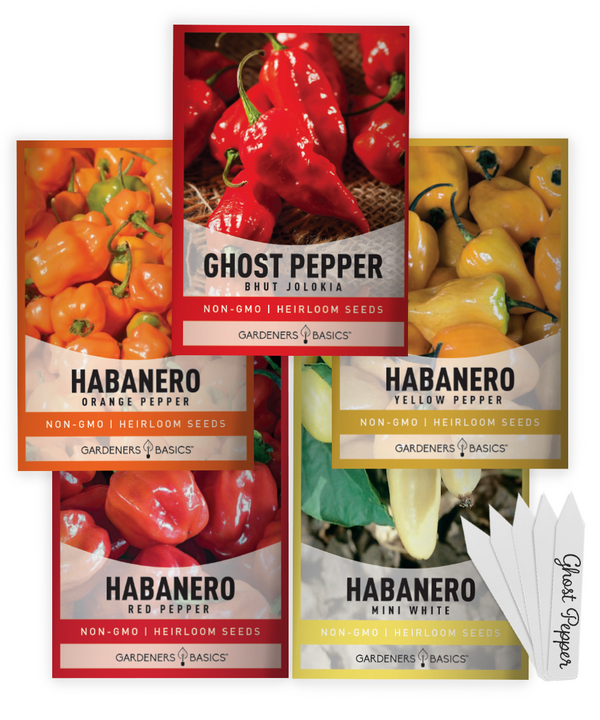
$9.95
Heirloom Hot Pepper Seeds – 5 Variety Pack, Includes Habanero & Ghost Pepper Seeds Spice up your garden with our 5 Hot Pepper Seeds Variety Pack—a must-have for any hot pepper lover or home gardener! This premium collection includes heirloom, non-hybrid,… read more
Common Pepper Varieties
In addition to heirloom peppers, there are several common varieties that you may come across:
- Bell Peppers: These are large, sweet peppers that come in various colors, such as green, red, yellow, and orange. They are perfect for salads, stuffing, grilling, and snacking.
- Jalapeño Peppers: Known for their medium heat, jalapeños are frequently used in Mexican and Tex-Mex cuisine. They add a spicy kick to salsas, nachos, and stuffed peppers.
- Cayenne Peppers: If you're looking for a fiery flavor, cayenne peppers are the way to go. They are often ground into a powder and used in chili, hot sauces, and marinades.
- Thai Peppers: These small but potent peppers pack a punch. They are commonly used in Thai cuisine and add intense heat to spicy curries, stir-fries, and soups.
These are just a few examples of the many pepper varieties available to gardeners. Whether you prefer sweet or spicy, mild or hot, there's a pepper plant out there that will suit your taste and culinary needs.
| Pepper Variety | Heat Level | Common Uses |
|---|---|---|
| Bell Peppers | Mild | Salads, stuffing, grilling, snacking |
| Jalapeño Peppers | Medium | Salsas, nachos, stuffed peppers |
| Cayenne Peppers | Hot | Chili, hot sauces, marinades |
| Thai Peppers | Very Hot | Thai cuisine, curries, stir-fries, soups |
Now that we've explored the different types of pepper plants, you can select the varieties that best suit your taste buds and gardening preferences. Whether you're a fan of mild bell peppers or crave the heat of jalapeños, growing your own peppers allows you to savor the flavors of freshly harvested produce. Happy gardening!
Factors Influencing Pepper Plant Stability
Several factors come into play when it comes to the stability of pepper plants. Understanding and addressing these factors is vital for supporting the healthy growth of your pepper plants. In this section, I will outline the key factors that influence pepper plants' stability and their implications for plant support.
1. Overall Structure
The overall structure of your pepper plants plays a crucial role in their stability. A well-branched and sturdy plant is less likely to lean or topple under the weight of its fruits. Regular pruning and removing damaged or weak branches are recommended to promote a strong structure. Additionally, providing support early in the plant's growth stage can help develop a more robust structure.
2. Fruit Load
The number and size of fruits on your pepper plants can impact their stability. Heavy fruit load can exert downward pressure on the branches, leading to bending and potential breakage. To prevent this, supporting the branches that bear the heaviest fruit clusters is essential. Supporting the fruit-bearing branches will distribute the weight more evenly and reduce the risk of damage.
3. Environmental Conditions
The environmental conditions in which your pepper plants grow can affect their stability. Strong winds, heavy rain, or storms can pose a significant threat, especially to taller plants. To mitigate the risk, consider planting your pepper plants in a sheltered area or using windbreaks to minimize wind exposure. Additionally, regularly inspecting the plant's support system and adjusting as needed will help ensure its stability in changing weather conditions.
By considering these factors and implementing appropriate support measures, you can help your pepper plants stay upright and thrive throughout the growing season.
| Factors Influencing Pepper Plant Stability | Implications for Plant Support |
|---|---|
| Overall Structure | Regular pruning and early support help develop a strong plant structure. |
| Fruit Load | Supporting heavy fruit-bearing branches reduces the risk of bending or breakage. |
| Environmental Conditions | Planting in a sheltered area and inspecting the support system protect against adverse weather effects. |

Properly supporting your pepper plants ensures their stability and overall health. In the next section, I will discuss the signs that indicate your pepper plants may require additional support.
Signs Your Pepper Plants Need Support
As an avid gardener, I've learned to pay close attention to the needs of my pepper plants. One of the key aspects to consider is whether they require additional support. Fortunately, there are several signs to look out for that can indicate when it's necessary to stake your pepper plants.
- High Fruit Load: When your pepper plants are heavy with developing fruits, their branches can become overloaded, leading to bending or breakage. This is a clear sign that your plants need support to maintain their upright position.
- Leaning or Tilting: If you notice your pepper plants leaning or tilting to one side, it's a sign that they lack sufficient structural stability. Staking them can help provide the necessary support to keep them upright and prevent further leaning.
- Weak Stems: Some pepper plant varieties naturally have weaker stems, making them more prone to bending or snapping under their own weight. If you notice your plants' stems appearing weak or unable to support themselves, it's time to introduce support stakes.
- Wind Damage: Strong winds can easily damage pepper plants, causing their branches to snap or bend. If you live in a windy area or have experienced wind damage, it's advisable to stake your pepper plants preemptively to protect them.
To help you visualize these signs, take a look at the following table:
| Signs Your Pepper Plants Need Support | Action Required |
|---|---|
| High Fruit Load | Stake plants to support the weight of the developing fruits. |
| Leaning or Tilting | Introduce support stakes to keep plants upright. |
| Weak Stems | Stake plants to provide additional structural support. |
| Wind Damage | Preemptively stake plants to protect them from strong winds. |
When you spot these signs, don't delay in providing the necessary support to your pepper plants. By staking them early on, you can prevent potential damage and ensure healthy growth throughout the season.
Now that we've explored the signs indicating the need for support in pepper plants let's move on to the next section to discover the benefits of supporting your plants and how to choose the right support method.
Benefits of Supporting Pepper Plants
Supporting your pepper plants can benefit their overall health and productivity. You can prevent plant breakage, improve airflow, and increase fruit production by providing the necessary support. Let's take a closer look at each of these advantages:
1. Prevention of Plant Breakage
Pepper plants can become top-heavy as they grow and produce abundant foliage and fruit. Without proper support, the weight of the plant can cause it to bend or break, resulting in irreversible damage. By staking your pepper plants, you ensure their stability and prevent the risk of breakage, allowing them to continue growing and thriving.
2. Improved Airflow
Supporting your pepper plants also enhances airflow around the foliage, essential for preventing the development of fungal diseases such as powdery mildew. When pepper plants are densely packed or lack support, air circulation becomes limited, creating a favorable environment for pathogens. Staking your pepper plants allows for better air movement, reducing disease risk and promoting overall plant health.
3. Increased Fruit Production
Proper support for pepper plants has been shown to increase fruit production. When pepper plants have the necessary structural support, they can allocate more energy to fruit development instead of diverting resources to maintain their upright posture. Staking your pepper plants ensures they can produce more flowers and fruits, resulting in a more abundant harvest.
"Supporting pepper plants not only protects them from physical damage but also improves airflow around the foliage and boosts fruit production."
With these benefits in mind, it's clear that staking and providing support for your pepper plants is a worthwhile investment. Whether you're growing bell peppers, jalapeños, or any other variety, supporting your plants will help maximize their potential and increase your overall yield.
Next, we'll explore the methods you can use to support your pepper plants, helping you choose the right approach for your specific garden setup and plant variety.
Pepper Seed Assortment | 8 Variety Pack

$15.95
8 Pepper Seeds Variety Pack – Heirloom, Non-GMO, Open-Pollinated, Non-Hybrid Seeds Elevate your garden with our 8 Pepper Seeds Variety Pack! This premium selection includes a mix of heirloom, open-pollinated, non-hybrid, non-GMO pepper seeds, perfect for beginner and experienced gardeners.… read more
Selecting the Right Support Method
When it comes to providing stability to your pepper plants, there are various support methods you can choose from. Each method has advantages and considerations, so selecting the right one for your specific pepper plant variety is essential.
Support Methods for Pepper Plants
Here are some common support methods used for pepper plants:
| Support Method | Description |
|---|---|
| Stakes | These single poles can be inserted into the ground next to the pepper plant to provide support. Stakes can be made of wood, bamboo, or metal and are versatile and easy to use. |
| Cages | Cages are wire or metal structures placed around the pepper plant to provide support. They allow the plant to grow within the cage, keeping the branches and fruits contained. |
| Trellises | Trellises consist of a framework of horizontal and vertical supports. Pepper plants can be trained to grow vertically along the trellis, saving space and enhancing airflow. |
| Netting | Netting is a flexible mesh material that can be stretched or hung to support pepper plants. It allows the plant to grow through the gaps while providing gentle support. |
Choosing the right support method depends on factors such as the size and weight of your pepper plants, the available space in your garden, and your personal preferences. Consider the specific needs of your pepper plant variety and select a support method to provide adequate stability and healthy growth.
Factors to Consider
When making your decision, keep the following factors in mind:
- The height of the plant: Consider the ultimate height your pepper plants will reach, as this will dictate the length of the support you need.
- The weight of the fruits: Certain pepper varieties produce heavy fruits that require sturdy support to prevent the bending or breaking of branches.
- The space available: Consider the size of your garden or growing area, as larger support structures may not be suitable if space is limited.
- Your gardening style: Consider your preference and the overall aesthetic you want to achieve in your garden. Some support methods offer a more traditional look, while others are more modern and minimalist.
By carefully considering these factors and evaluating the specific requirements of your pepper plants, you can choose the right support method to ensure their stability and promote healthy growth.

How to Stake Pepper Plants
Properly staking pepper plants ensures their stability and promotes healthy growth. You can prevent breakage, facilitate airflow, and maximize fruit production by providing support. In this section, I will guide you through the steps of staking your pepper plants effectively so you can enjoy a successful harvest.
Materials Needed
- Bamboo stakes or metal stakes
- Garden twine or plant ties
- Scissors or pruners
Step 1: Assess the Plant's Needs
Before staking your pepper plants, evaluate their height, growth habits, and overall structure. Determine whether they need support based on their size and tendency to lean or droop. It's best to stake them when young to avoid damaging the roots later.
Step 2: Insert the Stakes
Position the stakes around the perimeter of the pepper plant, ensuring they are at least 6 inches deep in the soil and 4-6 inches away from the stem. Use multiple stakes for larger plants or those with heavy fruit loads. Ensure the stakes are tall enough to accommodate the maximum height of the plant.
Step 3: Secure the Plant
Gently tie the main stem of the pepper plant to the stakes, starting at the base and working your way up. Use garden twine or plant ties, making sure not to tie it too tightly to allow for growth. Avoid tying too high or too low on the stem, as this can cause damage. Secure any lateral branches that may need additional support.
Step 4: Regular Maintenance
Regularly check the ties as your pepper plants grow to ensure they are not becoming too tight or digging into the stem. Adjust and loosen them if necessary to accommodate the plant's growth. Prune any excessive foliage or side shoots hindering airflow or weighing down the plant.
Step 5: Remove Stakes
You can remove the stakes and ties once the pepper plants have finished fruiting and the season ends. Gently untie the plant, being careful not to damage the stem. Store the stakes and ties for future use or dispose of them responsibly.
| Benefits of Staking Pepper Plants | Challenges of Staking Pepper Plants |
|---|---|
| 1. Prevents plant breakage | 1. Risk of tying too tightly and damaging the stem |
| 2. Improves airflow, reducing the risk of fungal diseases | 2. Requires regular maintenance and adjustment |
| 3. Supports heavy fruit loads, preventing branches from snapping | 3. Can be time-consuming, especially with multiple plants |
| 4. Facilitates easier harvesting and pest control | 4. Stakes may obstruct other plants or garden space |
Staking your pepper plants provides the necessary support and helps optimize their growth and productivity. Remember to choose the right stakes gently, tie the plants, and regularly monitor their development. Following these steps, you'll set your pepper plants up for success and enjoy a thriving garden.
Tips for Caring for Supported Pepper Plants
Once you've staked your pepper plants for added support, providing them with the proper care to promote healthy growth and a bountiful pepper harvest is crucial. Here are some tips to ensure your supported pepper plants thrive throughout the growing season.
Frequent Watering
Pepper plants have shallow root systems, so regular watering is essential to keep them hydrated. Aim to provide your plants with consistent moisture, maintaining evenly moist soil without overwatering. Monitor the weather conditions and adjust your watering schedule accordingly, ensuring your pepper plants have adequate moisture for healthy growth.
Fertilizer Application
Supporting pepper plants can increase their productivity, and proper fertilization is vital. Use a balanced fertilizer formulated specifically for vegetables to give your plants the necessary nutrients. Follow the manufacturer's instructions for application rates and timing to ensure optimal nutrition for your pepper plants.
Weed Control
Weeds can compete with your pepper plants for nutrients, water, and sunlight, hampering their growth and overall health. Regularly inspect your garden beds and remove any weeds that may appear. Use mulch to suppress weed growth and maintain a clean, weed-free environment for your supported pepper plants.
Pest and Disease Management
Pepper plants are susceptible to various pests and diseases, hindering their productivity. Monitor your plants regularly and take prompt action if you notice any signs of pests or diseases. Consider using organic pest control methods or consult a local gardening expert to identify and address any issues.
| Tip | Description |
|---|---|
| Pruning | Regularly prune your pepper plants to promote better airflow and minimize disease risk. Remove any dead or damaged branches and excess foliage to redirect the plant's energy towards fruit production. |
| Support Adjustment | As your pepper plants grow taller, ensure that the support structure remains sturdy and adequately supports the plants. Regularly check and adjust the stakes or cages to prevent any potential damage or instability. |
| Harvesting | Harvest your peppers at the correct stage of ripeness to encourage continuous fruit production. Promptly remove ripe peppers from the plant to redirect energy towards developing new fruits. |
By following these tips for caring for supported pepper plants, you can create an optimal environment for your peppers to flourish. Remember to regularly monitor your plants' progress, make necessary adjustments, and provide the care they require for a successful and rewarding pepper-growing experience.
Where to Get Pepper Seeds
When embarking on your pepper plant journey, starting with high-quality seeds is crucial. They serve as the foundation for healthy and robust plants that will reward you with abundant harvests. One reputable source to consider for your pepper seed needs is us here at Gardeners Basics.
Gardeners Basics is a trusted supplier known for offering various pepper seeds. Our extensive collection includes popular and rare pepper varieties, ensuring you can find the perfect seeds to suit your preferences and growing conditions.
By choosing pepper seeds from us at Gardeners Basics, you can have confidence in the quality and authenticity of the seeds you receive. They source their seeds from reputable growers and carefully test them for viability, ensuring a high germination rate and optimal plant performance.
Additionally, we provide detailed information on each pepper variety we offer, including growing requirements, flavor profiles, and expected yields. This valuable information will guide you in selecting the right pepper seeds for your garden and help you make informed decisions throughout the growing process.
At Gardeners Basics, we also offer excellent customer service, ensuring a positive buying experience. Our knowledgeable staff can assist you with questions or concerns, whether choosing the right seeds or troubleshooting common pepper plant issues.
Regarding obtaining high-quality pepper seeds, Gardeners Basics is a top choice for many gardeners. Our commitment to quality, extensive selection, and helpful customer support make them a reliable source for all your pepper seed needs. Start your pepper plant journey confidently by choosing pepper seeds from Gardeners Basics
Seed Safe Survival Seed Kit - 35 Variety Pack
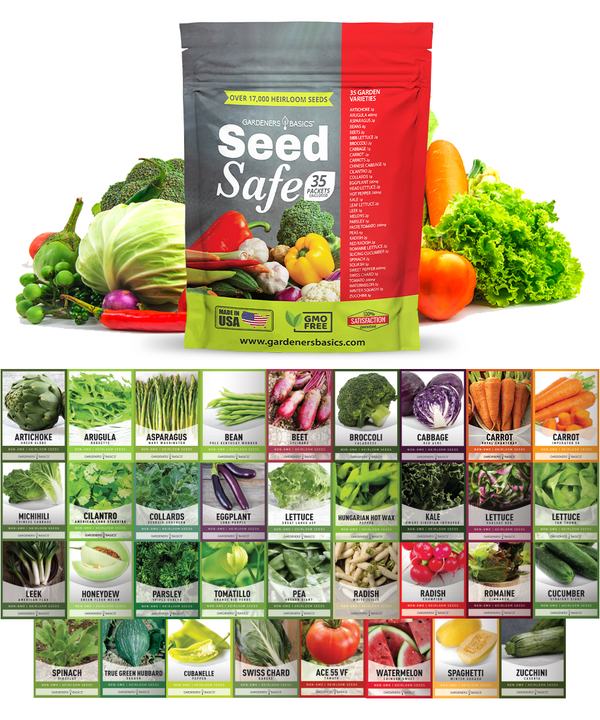
$29.95
$49.95
Seed Safe Survival Seed Kit: The Ultimate Heirloom Collection for Self-Sufficient Gardening Introducing the Seed Safe - 35 Varieties of Heirloom Vegetable, Herb, and Fruit Seeds, the ultimate solution for gardeners who want to secure a bountiful future harvest. This… read more
Troubleshooting Common Issues
Despite our best efforts, growing peppers can sometimes be challenging, and various issues can arise. Understanding these common problems and having the knowledge to troubleshoot them is essential for successfully cultivating pepper plants.
Lack of Fruit Set
One common issue that pepper growers face is a lack of fruit set. Pepper plants require proper pollination to produce fruits. If you notice a lack of fruit development, it could be due to the absence of pollinators or adverse weather conditions that impair pollination. To address this issue, consider hand-pollinating the flowers using a fine paintbrush or gently shaking the plants to encourage pollination.
Pest Infestations
Pests can pose a significant threat to the health and productivity of pepper plants. Common pepper plant pests include aphids, spider mites, and whiteflies. Take action immediately if you observe signs of pest infestation, such as yellowing leaves or webbing. Try using organic insecticidal soaps or neem oil to control these pests, or introduce beneficial insects like ladybugs or lacewings to the garden.
Disease Outbreaks
Pepper plants are susceptible to various diseases, including blight, blossom end rot, and powdery mildew. To prevent disease outbreaks, ensure proper spacing between plants for adequate airflow and avoid overhead watering, which can promote fungal growth. If you notice any signs of disease, promptly remove and destroy infected plant material to prevent further spread.
Environmental Stress
Extreme temperatures, drought, or excessive moisture can cause stress to pepper plants, leading to stunted growth or wilting. To mitigate environmental stress, provide consistent moisture through regular watering, especially during hot and dry periods. Applying a layer of mulch around the base of the plants can help retain soil moisture and regulate temperature.
Nutrient Deficiencies
Pepper plants require a balanced supply of nutrients for optimal growth. Common nutrient deficiencies include nitrogen, phosphorus, and potassium. To address nutrient deficiencies, consider fertilizing your plants with a well-balanced organic fertilizer or using specific nutrient supplements. Regular soil testing can help identify any deficiencies and guide appropriate fertilization practices.
Conclusion - Do Pepper Plants Need Support or Not?
In conclusion, determining whether your pepper plants need support is crucial for their overall health and productivity. By observing the signs of instability and implementing proper staking techniques, you can ensure that your pepper plants thrive and achieve a bountiful harvest. Supporting your pepper plants offers numerous benefits, including preventing breakage, improving airflow, and increasing fruit production.
When staking your pepper plants, selecting the right support method is important based on the specific variety you're growing. This will provide the necessary stability and ensure the optimal growth of your plants. Remember to stake them properly by following the recommended steps to maintain structural integrity.
After providing support, caring for your pepper plants is crucial. Remember to water them consistently, provide adequate sunlight and nutrients, and monitor for any signs of pests or diseases. This will ensure that your supported pepper plants grow strong and healthy and produce a satisfying yield that you can enjoy.
FAQ - Supporting Pepper Plants
Do pepper plants need support or not?
Yes, pepper plants benefit from support to ensure stability and promote healthy growth. Staking or providing other types of support can help prevent plant breakage, improve airflow, and increase fruit production.
What are the types of pepper plants?
Various types of pepper plants, including heirloom varieties, have unique characteristics. Common peppers include bell peppers, jalapenos, habaneros, and cayenne peppers.
What factors influence the stability of pepper plants?
Several factors can affect the stability of pepper plants. These factors include the plant's overall structure, the fruit load's weight, and the environmental conditions, such as wind or heavy rain, that may put stress on the plants.
How do I know if my pepper plants need support?
Signs that your pepper plants may need support include leaning or bending stems, fruit drooping toward the ground, or appearing top-heavy. These signs suggest that the plants struggle to support their weight and could benefit from additional support.
What are the benefits of supporting pepper plants?
Supporting your pepper plants has several benefits. It helps prevent plant breakage, improves airflow around the plants, reduces the risk of rot and disease, and increases fruit production by keeping the branches upright and evenly spaced.
How do I stake pepper plants?
To stake pepper plants, insert a stake or other support structure into the ground next to the plant. Carefully tie the stems to the stake using soft twine or plant ties, ensuring not to tie them too tightly to allow for growth. Adjust the ties and the stake height as the plant grows.
Where can I get high-quality pepper seeds?
A reputable source for pepper seeds is Gardeners Basics. We offer many pepper seeds, including heirloom varieties, ensuring you start your pepper plant journey with the best quality seeds.
What are some common issues that pepper plants may encounter?
Pepper plants may face common issues, including pests such as aphids or snails, diseases like powdery mildew or bacterial leaf spot, nutrient deficiencies, and extreme weather conditions. Effective pest control, proper watering and fertilization, and vigilant observation can help troubleshoot and resolve these issues.





